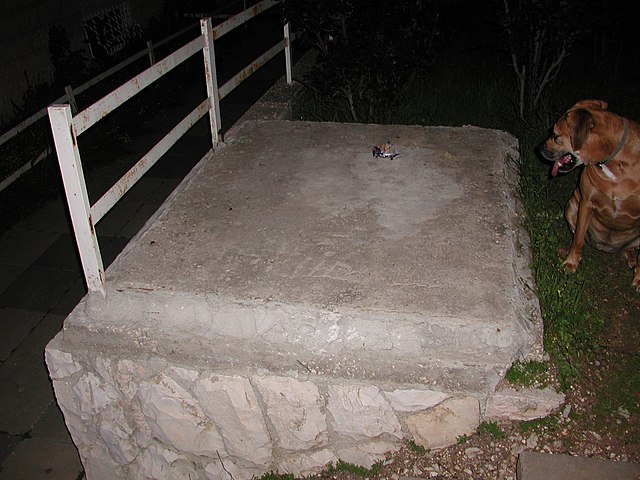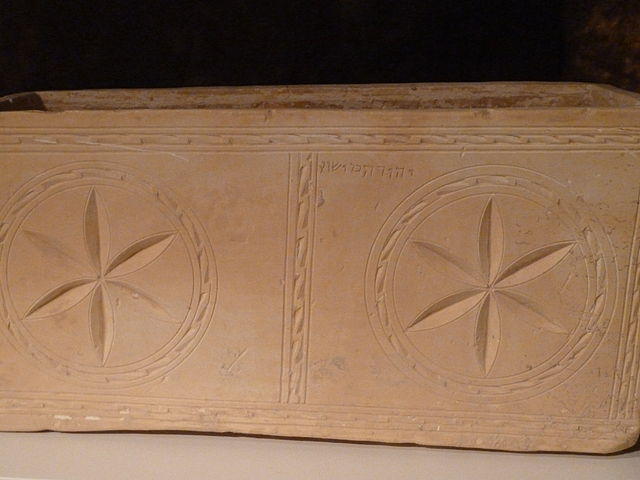The Talpiot Tomb is a rock-cut tomb discovered in 1980 in the East Talpiot neighborhood, five kilometers south of the Old City in East Jerusalem. It contained ten ossuaries, six inscribed with epigraphs, including one interpreted as "Yeshua bar Yehosef", though the inscription is partially illegible, and its translation and interpretation is widely disputed. The tomb also yielded various human remains and several carvings.
Sealed tomb in Talpiot
A concrete slab covers the tomb
Ossuary of Judah son of Jesus. The Israel Museum, Jerusalem.
An ossuary is a chest, box, building, well, or site made to serve as the final resting place of human skeletal remains. They are frequently used where burial space is scarce. A body is first buried in a temporary grave, then after some years the skeletal remains are removed and placed in an ossuary. The greatly reduced space taken up by an ossuary means that it is possible to store the remains of many more people in a single tomb than possible in coffins. The practice is sometimes known as grave recycling.
The limestone James Ossuary from the 1st century
Human remains on the walls and ceiling of Skull Chapel, Poland
A chandelier made of bones in Sedlec Ossuary, Czech Republic
Ossuary at the Gallipoli battlefield; contains the remains of French soldiers







